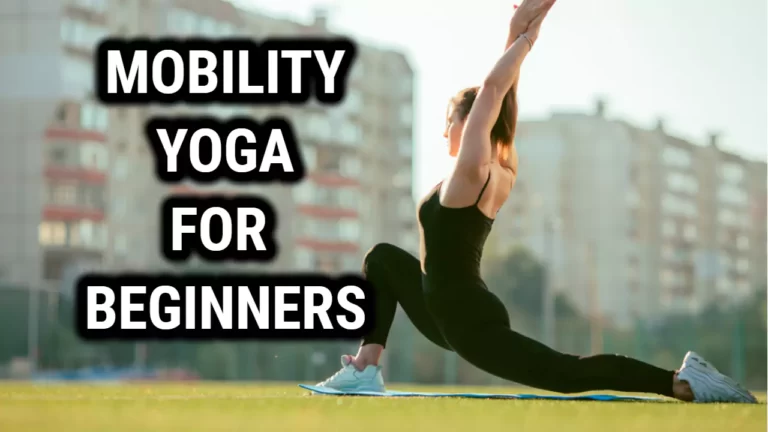Best Yoga Practices for Eyes: Improve Your Vision Naturally

Have you ever felt like the stress of everyday life is weighing down on your eyes? If so, you’re not alone. With the overwhelming demands of work, family and other commitments, it can be hard to keep our eyes healthy and functioning at their best.
But don’t worry – yoga has got your back! Research shows that there are certain yoga practices that can help improve the health of your eyes and reduce eye strain. In this article, we’ll explore some of the best yoga practices for eyes and discuss how they can help you get relief from tiredness, headaches and other issues related to poor vision. So if you’re looking for an easy way to look after your peepers, read on!
Understanding Eye Health
Eye health is an essential aspect of overall well-being. Poor eye health can result in vision problems, headaches, and other issues that can significantly impact daily life. Therefore, it is crucial to maintain healthy eyes by practicing good eye hygiene and engaging in activities that promote eye health.
One of the most effective ways to maintain good eye health is through yoga. Yoga for the eyes is a set of exercises that help to strengthen the eye muscles, improve vision, and reduce eye strain. These exercises are simple and can be done by anyone, regardless of their age or fitness level.
It is important to note that yoga for the eyes is not a substitute for proper eye care. It is essential to have regular eye check-ups and to follow the advice of your eye doctor. However, incorporating yoga for the eyes into your daily routine can help to improve your eye health and reduce the risk of eye-related problems.
Some of the benefits of practicing yoga for the eyes include:
- Reduced eye strain
- Improved focus and concentration
- Better vision
- Relief from headaches and migraines
- Reduced risk of eye-related problems such as glaucoma and cataracts
Overall, understanding the importance of eye health and incorporating yoga for the eyes into your daily routine can help to maintain healthy eyes and reduce the risk of eye-related problems.
Benefits of Yoga for Eye Health
Regular practice of yoga can have numerous benefits for eye health. Here are some of the benefits of yoga for eye health:
Relaxation of Eye Muscles: Yoga practices help to relax the muscles around the eyes, reducing eye strain and fatigue. This can help to improve vision and reduce the risk of eye diseases such as myopia and hypermetropia.
Better Blood Circulation: Yoga practices such as pranayama and meditation can help to improve blood circulation in the eyes, bringing more oxygen and nutrients to the eyes and reducing the risk of eye diseases.
Reduced Stress: Yoga practices can help to reduce stress and anxiety, which can cause eye strain and fatigue. By reducing stress, yoga practices can help to improve vision and overall eye health.
Improved Concentration: Yoga practices such as trataka (gazing meditation) can help to improve concentration and focus, which can improve eye health and reduce eye strain.
Prevention of Eye Diseases: Yoga practices can help to prevent eye diseases such as cataracts, glaucoma, and macular degeneration by improving blood circulation, reducing stress, and strengthening the eye muscles. Overall, incorporating yoga practices into your daily routine can have numerous benefits for eye health. By reducing stress, improving blood circulation, and relaxing the eye muscles, yoga can help to improve vision and reduce the risk of eye diseases.
Best Yoga Practices for Eye Health
Yoga is a holistic approach to health and wellness that can help improve eye health. Here are some of the best yoga practices for eye health:
Trataka: Trataka is a yogic practice that involves staring at a single point, such as a candle flame or a dot on a wall, without blinking. This practice can help improve concentration, focus, and eye health. It is also believed to help alleviate eye strain and improve vision.
Eye rotations: Eye rotations involve moving the eyes in a circular motion, both clockwise and counterclockwise. This practice can help improve eye muscle strength and flexibility, and it can also help reduce eye strain and fatigue.
Palming: Palming is a simple yet effective practice that involves covering the eyes with the palms of the hands. This practice can help reduce eye strain and fatigue, and it can also help improve relaxation and mental clarity.
Eye exercises: There are various eye exercises that can help improve eye health, such as focusing on distant objects, shifting focus from near to far, and moving the eyes in different directions. These exercises can help improve eye muscle strength, flexibility, and coordination, and they can also help reduce eye strain and fatigue.
Meditation: Meditation is a powerful practice that can help improve overall health and wellness, including eye health. By reducing stress and promoting relaxation, meditation can help improve circulation and reduce inflammation, which can benefit the eyes and other parts of the body. Incorporating these yoga practices into a daily routine can help improve eye health and overall well-being. However, it is important to consult with a healthcare professional before starting any new exercise or wellness program, especially if you have any pre-existing health conditions.
Also Read: What Is Kripalu Yoga – Is It a New Way To Reduce Stress
Blinking Exercise
We all have those days when our eyes feel strained, tired, and dry. It can be quite uncomfortable to deal with such symptoms. But luckily, there are plenty of yoga practices that we can do to help ease the discomfort. One of these practices is a blinking exercise.
The blinking exercise is a simple yet effective technique that helps to relax your eyes and reduce eye strain. To do this exercise, simply close your eyes for a few seconds and then open them again quickly. You can repeat this several times in a row or hold each blink for longer periods of time. This exercise stimulates the tear production in your eyes which helps keep them lubricated and comfortable.
By practicing this simple yet powerful technique regularly, you can help keep your eyes healthy and relaxed so that they can serve you well throughout life’s journey!
Breathing Exercises
Breathing exercises, or pranayama breathing, are among the most important yoga practices for eyes. Pranayama is the ancient practice of controlling breath through specific techniques and sequences. It has been used for centuries to facilitate deep relaxation and meditation. Through regular practice, pranayama breathing can help improve circulation to the eyes and reduce strain on the eyes from digital screens and other sources.
There are several types of yogic breathing techniques that can be beneficial for eye health.
Ujjayi breathing is one of the most popular techniques as it helps to build internal heat in the body which can help increase blood flow to the eyes.
Nadi Shodhana is another popular technique which involves alternating between nostrils while inhaling and exhaling slowly. This technique helps to balance the nervous system and reduce stress levels, which can have a positive effect on vision.
Finally, Bhastrika breathing is a powerful pranayama practice that helps to stimulate the mind-body connection and oxygenate all cells in the body, including those in our eyes.
These yogic breathing practices can be done anytime during the day to promote better eye health and overall wellbeing. When practiced regularly, they can also help bring mental clarity which is beneficial for eye strain caused by prolonged exposure to screens or harsh lighting conditions.
Related Read: Yoga for Intestine Health: Poses to Improve Digestion and Reduce Bloating
Conclusion
The eyes are one of the most important organs in the human body, and taking care of them is crucial for overall health and well-being. Yoga practices can be an effective way to keep the eyes healthy and improve eyesight.
Through a combination of exercises, including palming, eye rotations, and figure eights, people can improve their eye muscle strength, flexibility, and reduce eye fatigue. Additionally, practicing pranayama breathing techniques can help reduce stress and improve circulation to the eyes.
It is important to note that while yoga practices can be beneficial for eye health, they should not replace regular eye exams or medical treatment for eye conditions. People should consult with their eye doctor before starting any new exercise routine.
Overall, incorporating yoga practices into a daily routine can be a great way to maintain eye health and improve overall well-being.





